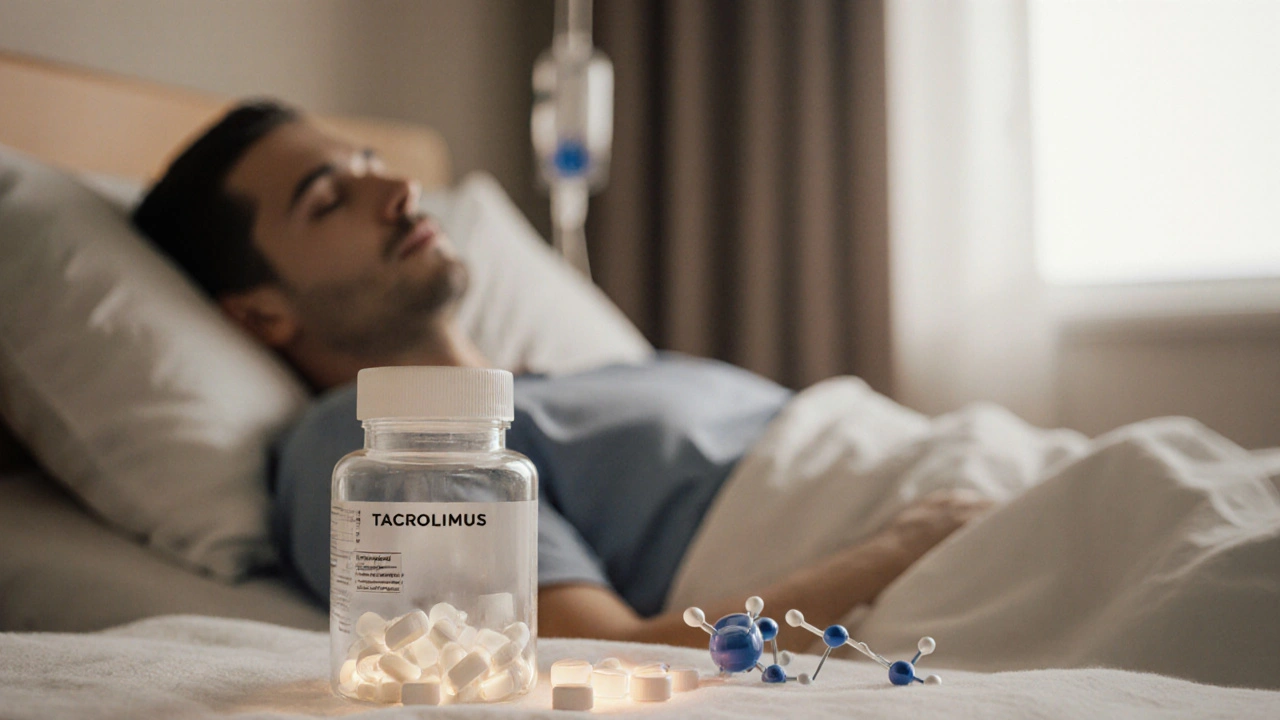Cyclosporine: Uses, Side Effects, and Alternatives
When you hear about cyclosporine, a calcineurin inhibitor that suppresses the immune system, mainly used to prevent organ rejection after transplants. Also known as CsA, it falls under the broader drug class of immunosuppressant, medications that reduce the body’s immune response. The drug is a staple in organ transplantation, the surgical transfer of a healthy organ from a donor to a recipient and is sometimes prescribed for certain autoimmune diseases. Understanding how it works and what to watch for can make the difference between a smooth recovery and serious complications.
How Cyclosporine Works
If you’re wondering why cyclosporine matters, think of it as a brake on a specific part of the immune system. It binds to a protein called cyclophilin, and that complex blocks calcineurin, an enzyme needed to activate T‑cells. By stopping calcineurin, the drug reduces the production of interleukin‑2, a signal that tells immune cells to multiply. The result is a cooler‑down of the immune response, which helps stop your body from attacking a newly‑placed organ. This mechanism is why doctors rely on it for transplant patients, but it also means the drug can affect other body systems if not managed carefully.
In practice, cyclosporine is most common after kidney, liver, heart, and lung transplants. The drug helps keep the immune system from recognizing the new organ as foreign, cutting the risk of acute rejection. Transplant centers usually start patients on a specific dose based on weight, then adjust after checking blood levels. The goal is to stay within a therapeutic window—high enough to stop rejection, low enough to avoid toxicity. Because each patient’s metabolism differs, regular monitoring is a must.
Beyond transplants, cyclosporine shows up in the treatment of severe psoriasis and rheumatoid arthritis when other options fail. In these autoimmune conditions, the immune system mistakenly attacks the body’s own tissues. By dampening T‑cell activity, cyclosporine can reduce skin plaques and joint inflammation. However, because long‑term use raises the chance of side effects, doctors often prescribe it for short bursts or combine it with other drugs to keep the dose low.
Side effects are a big part of the conversation. The most frequent issues include kidney dysfunction, high blood pressure, and excessive gum growth. Some patients notice tremors, headaches, or increased hair growth. Because the drug can affect kidney function, labs that track creatinine and electrolytes are checked at each visit. If you experience swelling, sudden weight gain, or vision changes, it’s a signal to call your doctor right away. Lifestyle tweaks—like limiting salty foods, staying hydrated, and practicing good oral hygiene—can help blunt some of these effects.
When cyclosporine isn’t the right fit, doctors often turn to tacrolimus, another calcineurin inhibitor that works similarly but with a slightly different side‑effect profile. Tacrolimus tends to cause fewer gum issues but may increase the risk of diabetes. Other alternatives include sirolimus and everolimus, which block a different pathway (mTOR) and are useful for patients who can’t tolerate calcineurin inhibitors. Choosing the right drug depends on your medical history, the organ transplanted, and how your body reacts to the medication.
Getting the dose right is a balancing act. Doctors start with a standard dose, then adjust based on trough blood levels measured just before the next dose. The target range varies by organ type—usually 100–200 ng/mL for kidney transplants, a bit lower for liver. Food can affect absorption, so many clinicians advise taking cyclosporine on an empty stomach or with a consistent meal pattern. Grapefruit juice, for example, can raise drug levels and increase toxicity risk. Always tell your pharmacist about over‑the‑counter meds or supplements, because drugs like statins and certain antibiotics interact strongly with cyclosporine.
The articles below dive deeper into these topics. You’ll find practical guides on managing side effects, comparing cyclosporine with other immunosuppressants, and tips for staying safe while taking the medication. Whether you’re a transplant recipient, a caregiver, or just curious about how this drug works, the collection offers clear, actionable information to help you make informed choices.

Prograf (Tacrolimus) vs. Alternative Immunosuppressants: A Detailed Comparison
A side‑by‑side comparison of Prograf (Tacrolimus) with cyclosporine, sirolimus, everolimus, mycophenolate and belatacept, covering mechanisms, dosing, benefits and side‑effects.
- Health and Wellness (55)
- Drug Information (37)
- Pharmacy Information (19)
- Medical Conditions (15)
- Supplements (4)
- Travel Health (2)
- Diabetes (2)
- Mental Health (2)
- Heart Health (1)
- Fertility (1)
-
Bronchitis vs Pneumonia: How They’re Linked and What It Means for You
22 Sep 2025 -
Discover the Age-old Secret of Olive Dietary Supplements for Ultimate Health
1 Jun 2023 -
Cmax and AUC in Bioequivalence: Understanding Peak Concentration and Total Drug Exposure
3 Dec 2025 -
Blood Sugar Control and Diabetic Peripheral Neuropathy: Key Management Strategies
2 Oct 2025 -
Phenazopyridine & Exercise: How to Stay Active When You Have a UTI
21 Oct 2025

12.10.25
Alistair Mukondiwa
16